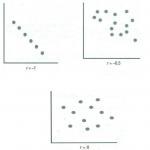What postings in 1 s. Accounting entries: what they are and the principles of their preparation. By salary
1C: Accounting 8.2. A clear tutorial for beginners Gladky Alexey Anatolyevich
Business transactions and accounting entries
You can generate business transactions and accounting entries in the 1C Accounting 8 program in several ways, which are listed below.
Automatically simultaneously with document posting. To do this, you need to specify the accounting entries in the appropriate fields of the document editing window. Please note that for some documents it is possible to generate several transactions simultaneously. For example, when posting the document “Receipt of goods and services,” entries are generated separately for the amount of incoming inventory (work performed, services provided) and for the amount of VAT on the incoming assets (work performed, services provided).
NOTE
If the document editing window has fields for entering accounting accounts, then you can post an accounting document only if all these fields are filled in.
Manually in the transaction log. To switch to the mode of working with this log, use the main menu command Operations? Transaction log. To enter an accounting entry manually, you need to click the Add transaction button in the toolbar of the journal window, and in the window that opens, enter the parameters of the business transaction and accounting entries for it. With the help of manually generated accounting entries, you can carry out accounting, for example, accounting certificates.
Using the mechanism of standard operations. To switch to the mode of generating standard operations, the Operations? command is intended. Typical operations. What the mechanism of standard operations in the 1C Accounting 8 program is was discussed above, in the section “Main stages of working with the program.”
In automatic mode using the document “Month Closing” (Operations? Routine operations? Month Closing). When creating this document, you yourself indicate which transactions the program should create after it is completed. This could be, for example, revaluation of foreign currency, depreciation, closing cost accounts, calculating financial results, etc.
Note that most often users create transactions and postings using the first of the listed methods - simultaneously with posting the corresponding document. Manual generation of entries is practiced less frequently and mainly to reflect in accounting some non-standard situations, documented in accounting statements or other documents. Automatic generation of transactions based on the “Month Closing” document is carried out monthly.
From the book Settlements with accountable persons: accounting and taxation. author Zakharyin V R4. Basic accounting entries for accounting of settlements with accountables
From the book Intangible Assets: Accounting and Tax Accounting author Zakharyin V R3. Basic accounting entries for accounting for intangible assets In accounting, the following entries are made for accounting for intangible assets (see.
From the book Formation of financial results in accounting author Berdyshev Sergey Nikolaevich5. Basic accounting entries for account 05 In the accounting of intangible assets, the following entries are made for account 05 (see.
From the book Analysis of Financial Statements. Cheat sheets author Olshevskaya Natalya1.5. Accounting entries related to income accounting The most important entries are provided with brief comments. Accounting accounts are arranged in the order prescribed by the current Chart of Accounts for accounting financial and economic activities
From the book 1C: Accounting 8.2. A clear tutorial for beginners author Gladky Alexey Anatolievich2.5. Accounting entries related to expense accounting The most important entries are provided with brief comments. Accounting accounts are arranged in the order prescribed by the current Chart of Accounts for accounting financial and economic activities
From the book ABC of Accounting author Vinogradov Alexey Yurievich3.5. Accounting entries related to profit and loss accounting The most important entries are provided with brief comments. Accounting accounts are located in the order prescribed by the current Chart of Accounts for financial and economic accounting
From the author's book67. Business transactions Business transactions are individual business actions performed in the course of implementing the plan. Each operation causes a certain movement and change in the composition of funds. Some funds leave the enterprise, others
From the author's bookAccounting entries and salary reporting As we noted earlier, the program will automatically generate accounting entries for wages, as well as accruals and deductions after the Salary Reflection document has been created and posted.
From the author's book6.2. Basic accounting entries for account 20 “Main production” Information on production costs (core production of this organization) is reflected in the active account 20 “Main production”. The balance of account 20 “Main production” at the end
From the author's book6.3. Basic accounting entries for account 23 “Auxiliary production” To determine the cost of products and services of auxiliary production, active account 23 “Auxiliary production” is used. Account 23 is similar to account 20. Account balance
From the author's book6.4. Basic accounting entries for account 25 “General production expenses” On the active account 25 “General production expenses” they keep track of expenses for the management and maintenance of workshops, that is, account 25 reflects the costs of the workshop. Account 25 balance at the reporting date
From the author's book6.5. Basic accounting entries for account 26 “General expenses” On the active account 26 “General expenses” they keep track of the costs of managing and servicing the enterprise as a whole, that is, account 26 reflects the costs of the plant management. Account 26 balance
From the author's book6.6. Basic accounting entries for account 28 “Defects in production” Active account 28 “Defects in production” is used to account for the costs of correcting defects and the corresponding funds spent on final defects. Account 28 has no balance at the end of the month and,
From the author's book6.7. Basic accounting entries for account 29 “Service production and farms” On the active account 29 “Service production and farms”, the corresponding costs are taken into account if the enterprise’s balance sheet includes, for example, dormitories, hotels,
From the author's book6.8. Basic accounting entries for account 96 “Reserves for future expenses” The most common is the reservation of employee salaries during vacation. The fact is that vacations to employees of the organization are provided unevenly throughout the year. This
From the author's book6.9. Basic accounting entries for account 97 “Deferred expenses” Deferred expenses are expenses incurred in the reporting period, but essentially related to future periods. The main example of such expenses is the cost of preparing and developing a new
Send this article to my email
Most 1C:Accounting configuration documents generate transactions in the program; one document can correspond to several transactions at once, and the same transaction can be generated by different documents.
In accounting practice, there are situations when you need to reflect a business transaction by entering a posting, but the program does not provide a document for this; in such cases, manual entry of the necessary correspondence is allowed.
If you have questions on the topic of wiring in 1C, ask them in the comments under the article, our specialists will try to answer them.
However, if you are new to accounting or the 1C program and do not understand which document should be used to reflect this or that business transaction, do not rush to enter them using manual entries, this may lead to accounting violations. In order to check what document is used to document the posting (and whether there is such a document in the information system at all), there is a register called Account Correspondence. Opens in the Main section → Enter a business transaction or through the All functions menu → Information registers → Account correspondence. It is presented in the form of a workplace in which, using selections, you can quickly search for documents on the posting that interests us. To do this, it is enough to indicate the debit and credit accounts and the list will display the documents to which the specified correspondence of accounts corresponds, while the content of the operation performed by this transaction and the location of the selected documents in the 1C database (in which sections they can be found) are also displayed.
If, however, it is not possible to reflect a business transaction using the standard option, and there is no document in the information system, you will have to make the posting in 1C Accounting manually, using a document specially designated for this purpose.
Making a posting in 1C Enterprise Accounting 3.0 is not difficult; to do this you need to create a document called Operation. Open the section Operations → Operations entered manually. Next, we create the Operation document, one of its purposes is to register correspondence of accounts for accounting and (or) tax accounting manually. When creating, from the proposed options, select the Operation type.
Filling out the document is quite simple; in the header you need to indicate the organization and content (description of the business transaction). The Transaction Amount field does not need to be filled in; its value will be calculated based on the data in the tabular rows as they are entered.
To fill out the tabular part, click Add and in a new line enter the correspondence of the accounts and the amount, and also, if necessary, indicate additional analytics and content for each transaction. So we add lines for each transaction.
Afterwards, you need to check the document and if everything is correct, save it in the system by clicking Save and close. As a result, a new document will appear in the list of manually entered transactions. You can check the postings made by him by clicking the Dt-Kt icon (Show postings and other movements of the document). You can also print an accounting certificate for the entered document by selecting it in the list and clicking the Accounting certificate button.
Team of experienced 1C programmers:
From 5 minutes response time to urgent tasks, even on weekends and holidays.
30+ programmers with up to 20 years of experience in 1C.
We make video instructions on completed tasks.
Live communication through any messengers convenient for the client
Monitoring the completion of your tasks through our specially developed application
Official partners of the 1C company since 2006.
Experience of successful automation from small firms to large corporations.
99% of clients are satisfied with the results
Some of my readers are experienced accountants who have previously worked in other accounting programs and decided to study the program 1C Accounting Enterprise.
How to quickly start working in this program? This article is for you.
In the 1C Accounting Enterprise 8 program there is a very convenient service created for those who are familiar with the theory of accounting, but are not yet familiar with 1C programs. It's called "".
This is a list of correct correspondence accounts indicating which document this transaction is entered into in this program.
The list of transactions is contained in the information register "".
Let's take a closer look at how to work with it.
IN 1C Enterprise Accounting 8.2 edition 3.0 you can find it in the desktop navigation panel:
Another way to open the “Account Correspondence” information register is from the navigation panel of the “Accounting, Taxes, Reporting” section.
The “Correspondence of Accounts” register will open in the work area of the program, where all standard correspondence of accounting accounts is entered, indicating the documents that are entered into the posting system. Documents are presented in the form of links, when clicked on, a form for entering a new document of the specified type opens.
The top panel contains details for quick selection by the user according to specified parameters.
For example, we need to enter . We know that in this case a posting is generated on the debit of account 07 “Equipment for installation”.
In the “Account Dt” detail, select account 07 from the chart of accounts. After that, the list below displays all possible entries for the debit of account 07.

In the same way, you can select all correspondence by the loan account of interest, as well as by the content of the transaction (here you can not enter it in full, but try searching using keywords like “equipment”).
You can also make a selection based on the document that generates the transactions. When you select a document, all possible transactions generated by this document will be displayed.

You can also use the search in the “Content of operation” attribute. In this case, I recommend not entering the full name of the operation into the search bar, but entering only keywords.
For example, selecting by the content of the “Transfer of Goods” operation will return all the contents:

Pay attention to the contents of the “Document” column. It contains a link to the document in which the required transaction is entered, the type of transaction of the document, and the document tab in which the entry we need will be displayed.
The last column of the information register form “Correspondence of accounts” contains information about where in the program to find the specified document.

If you are registered on the 1C user support website, you can use one more service - view an example of entering this business transaction on the information technology support (ITS) website by clicking on the link “Example on ITS”, where it exists (there are no such examples for all correspondence).
Thus, using the ““ service, you can master the program much faster 1C Enterprise Accounting 8.
Video tutorial:
Data on business transactions of an enterprise in the 1C:Enterprise system are stored in the form of transactions. Each transaction contains one or more entries that fully reflect the business transaction in accounting.
Transaction log
In the 1C:Enterprise system, the transaction log is used to view a list of entered accounting transactions. Each operation is displayed in one line containing the most important information about the operation: date, type of document, content, amount of the operation, etc.
Posting journal
The journal entry is a means of viewing, in the form of a list of accounting entries, entered transactions. Each operation contains one or more transactions. If in the transaction journal you can view the basic data for the transactions in the list and transactions for the current transaction, then the transaction journal reflects transactions related to different operations.
Entering and editing transactions
The transaction journal and transaction journal are designed to be viewed as a list of existing transactions with varying degrees of detail. In both journals, there is almost the same set of actions for entering and editing transactions.
Deleting (marking for deletion) an operation (document)
Since operations in the 1C:Enterprise system belong to documents, deletion and marking for deletion in the journal of operations (postings) will be performed for the document itself. | Note that when performing a deletion (mark for deletion) in the transaction journal, the action will not apply to the current line, but to the entire operation (document) to which this transaction relates.
Cancel a mark to delete an operation (document)
To cancel marking for deletion of an operation (document), place the cursor on the desired line in the journal and press the Del key, or click the button on the toolbar of the journal window, or select "Cancel marking for deletion" in the "Actions" menu of the main menu of the program.
Changing the time of an operation (document)
All documents (including operations entered manually) in 1C:Enterprise form a single sequence. It, in fact, reflects the sequence of events that are reflected in documents and transactions. | Time is used to determine the sequence of documents within one date.
Go to the transaction journal and posting journal
When working in the transaction journal, transaction journal and transaction form, it is possible to go to the transaction journal and transaction journal. In this case, the current position is selected in accordance with the current position in the form from which the transition is performed.
Enabling and disabling transaction postings
Those transactions that contain postings affect the calculation of accounting totals. If desired, you can exclude the operation from the total calculation. To do this, just select the desired operation in the transaction log (postings), and then select the "Turn off postings" item in the "Actions" menu.
Checking journal entries
1C:Enterprise has a special mode “Correct transactions”, which allows you to define a list of acceptable transactions at the level of synthetic accounts and subsequently check transaction transactions for compliance with the entered list.
Actions on documents
Since operations and, accordingly, postings belong to documents, when working in the transaction journal and in the posting journal, almost all actions that can be performed with documents in the document journal are available. These actions are called up by various items in the Document submenu of the Actions menu.
1. Accounting entries of documents
All business transactions are recorded in accounting documents, the completion of which is mandatory. Based on primary documents, the accountant makes accounting entries (entries). This principle is also used in the 1C: Accounting 7.7 program.
When we enter a document into the journal, many documents at this time automatically generate transactions based on the document details. Which transactions, with which correspondence, should be generated is specified in the configurator, so we do not indicate this every time - the program works automatically, hiding all these details from us.If you wish, you can see which transactions are generated for the document using the button: (Postings). Posting a document"Receipt of materials"
Note:
It is impossible to change anything in the posting window.
One or more transactions are combined into a transaction
. You can open the operation with the buttonIn addition to postings, the operation has a header line containing the date, number, amount, and content of the operation.
Note: It is not possible to change anything in the operation window.
The document may or may not be posted.
A posted document has accounting entries and is indicated in the journal by the icon
.- means not accepted for accounting, that is, without accounting entries. When performing some transactions, documents are printed in advance, and until it is known whether a business transaction will be carried out on this document, it should not have postings. To disable them, you need to right-click on the document line and select the command Make not posted, then Yes, the check mark from the document icon disappears
.To turn transactions back on, you need to open the document (double-click) and click Ok in the document details window.
Note: after deleting the deletion mark, the document becomes unposted, that is, it has no postings, they need to be included as described above
2. Management of accounting results, familiarization with reporting
Receiving reports is the final stage of accounting. In automated accounting, the most important step is entering information into the program. When documents or transactions are entered, the program automatically calculates the totals, that is, turnover and account balances, but does so
up to a certain quarter. When moving to a new quarter, you need to set up the calculation of accounting results for the desired quarter, only after that you can receive reports.To change the calculation periodyou need to open the window"Management of accounting results": Operations ® Managing Accounting Results .
The window contains:
Button Set calculation by– the period that will be set as the new total support limit when you click the Set calculation button.
Complete recalculation of results– recalculation of all accounting results from the earliest transactions (by date) until the quarter established in this mode – limits for supporting the results
Exit– closes the dialog window.
Calculation of totals is set according to– shows up to which quarter (inclusive) the accounting results are currently supported.
Now you can receive reports for the selected quarter.
Getting to know the reports:
The most frequently used report, and at the same time containing the largest amount of information, isTurnover balance sheet. It displays turnover and balances for synthetic accounts. Let's open this report:Reports ® Balance Sheet .
A dialogue window appears in which we need to clarify for what period we need the results in the balance sheet. By default, the reporting period is set to the quarter to which it belongs.working date(set working date:Service ® Options ® General ® Working date ). The balance sheet period can be easily changed using the buttoncalendarto the right of the start and end dates of the period. And the square button to the right of the periodallows you to select one of the fixed periods (quarter, month). To generate a statement, clickOk.






